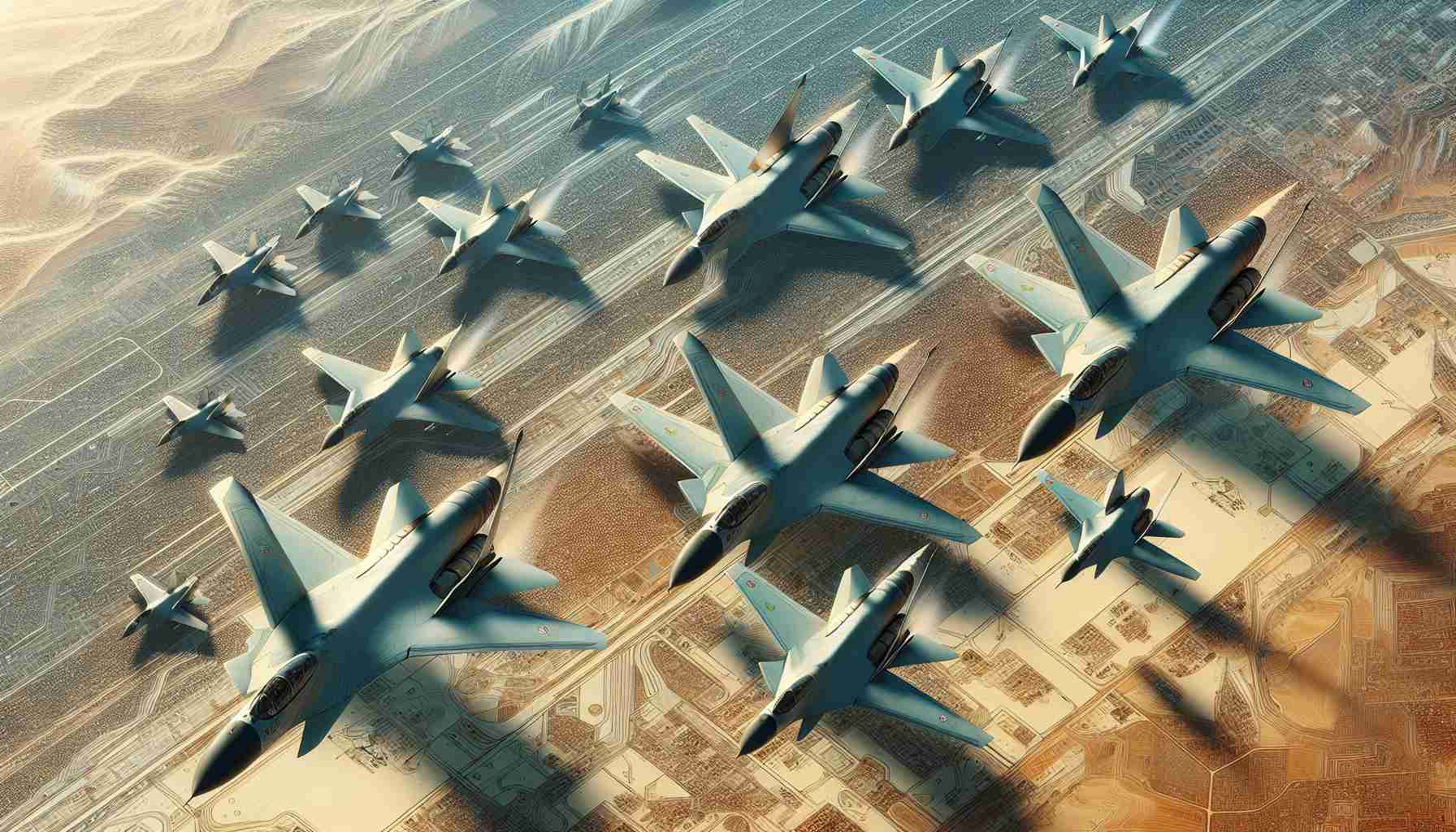- Iran is set to acquire Russian Su-35 fighter jets, marking a significant upgrade in its air combat capabilities.
- Iran’s current air fleet consists mostly of outdated American aircraft, making this transition critical to maintaining military relevance.
- The initial order may include over 25 Su-35s, with the possibility of future acquisitions raising that number to 64 or more.
- This enhancement not only strengthens Iran’s military strategy but also supports Russia’s ambitions in arms exports.
- The introduction of Su-35s will alter regional power dynamics and may provoke responses from neighboring countries and U.S. forces.
- Iran’s move signals a shift from asymmetric tactics toward a focus on conventional warfare capabilities.
Iran is on the brink of a seismic shift in its air combat capabilities, as whispers of acquiring Russian Su-35 fighter jets materialize into reality. With the help of leaked satellite imagery and expert analysis, it’s becoming clear that Tehran is ready to dramatically enhance its aerial prowess.
For decades, Iranian air power has been grounded in a mix of aging American aircraft like the F-4 Phantom and F-5 Tiger. These relics are now overshadowed by the cutting-edge Su-35, known for its lightning-fast speed and exceptional maneuverability. This upgrade is not just smart; it’s essential. As adversaries like Israel and Turkey ramp up their military technologies, Tehran is racing to close the technology gap.
Reports suggest Iran’s initial order may consist of over two dozen Su-35s, potentially reaching beyond 64 jets in future acquisitions. This would not only bolster Iran’s regional influence but also gives Russia a significant boost in its export ambitions. The Su-35’s advanced capabilities are expected to radically enhance Iran’s military strategy, indicating a possible pivot from asymmetric tactics toward conventional warfare.
The implications are vast. Iran’s strengthened air force challenges existing power dynamics in the Middle East, prompting reactions from neighboring states and U.S. forces stationed in the region. As Tehran prepares to roll out these jets, the geopolitical chessboard is set for a significant reshuffle.
As this new era of air power emerges, the world will closely watch how Iran integrates these formidable machines into its military framework. Whatever happens next, one thing is clear: the roar of the Su-35s will echo far beyond Iranian skies, reshaping the landscape of modern warfare.
Is Iran’s Military Transformation About to Change Everything? Discover the Real Impact of Su-35 Acquisition!
Overview of Iran’s Military Aerospace Advancements
Iran stands on the verge of a transformational upgrade in its air combat capabilities with the forthcoming acquisition of Russian Su-35 fighter jets. This modernization signifies not just an enhancement of military assets but a critical shift in geopolitical power in the Middle East. As Iran prepares to receive these aircraft, the implications extend beyond mere firepower enhancements, reshaping regional military dynamics and strategic calculations.
Key Features of the Su-35 Fighter Jet
The Su-35 is recognized for its advanced avionics, supermaneuverability, and ability to engage in multi-role operations. Notable features include:
– Supermaneuverability: This allows the aircraft to perform complex aerial maneuvers that enhance its combat effectiveness against enemy jets.
– Advanced Radar Systems: The Su-35 is equipped with high-capacity radar, providing superior tracking and targeting capabilities.
– Enhanced Payload: It can carry a wide array of weapons, including advanced air-to-air and air-to-ground missiles, significantly diversifying its combat utility.
Potential Market Impact and Forecasts
As Iran integrates Su-35s, the regional balance of air power will likely shift. Experts predict a sequence of military responses from neighboring countries, potentially leading to an arms race in the region. This could also affect military sales and alliances, influencing where other nations source their fighter jets, particularly in the Middle East.
Use Cases: Deployment Scenarios for the Su-35
1. Air Superiority Operations: The Su-35 could be pivotal in establishing air dominance in potential conflict scenarios against adversaries like Israel.
2. Counter-Insurgency Operations: Its capabilities may also prove essential in operations against non-state actors, enhancing Iran’s ground attack missions.
3. Deterrent Strategy: The mere presence of these jets can serve as a deterrence tool against regional rivals, altering threat perceptions.
Limitations and Challenges
Despite its advanced technology, there are concerns regarding:
– Integration Issues: Incorporating such advanced systems into Iran’s existing military structure may present logistical and training challenges.
– Maintenance and Support: Iran’s ability to maintain sophisticated jets could be hampered by sanctions and supply chain limitations.
Pricing and Acquisition Trends
Reports indicate that the initial order could exceed two dozen jets, with potential for additional purchases. Speculated costs for Su-35 acquisitions can reach upwards of $50 million per unit, a substantial investment for Iran, signaling significant upgrades in military capabilities despite economic constraints.
Insights into the Geopolitical Landscape
The acquisition of Su-35 jets aligns with Iran’s broader strategy to assert power against traditional adversaries. As military capabilities grow, the likely response involves extensive diplomatic maneuvering and enhanced military preparedness from countries in the region and the U.S. forces stationed nearby.
Related Questions
1. What are the implications of Su-35 acquisition on Iran’s military strategy?
The acquisition signals a shift towards conventional warfare capabilities, moving away from asymmetric tactics, thereby redefining Iran’s military approach in regional conflicts.
2. How could this impact U.S. foreign policy in the Middle East?
The U.S. may reconsider its security commitments in the region, with possible upgrades to military assistance for allied nations threatened by Iran’s enhanced capabilities.
3. What potential responses can be expected from Israel and Turkey?
Both nations may accelerate their military modernization efforts and strengthen defense collaborations to balance the technological advancements represented by the Su-35.
Conclusion
Iran’s paths forward with the Su-35 will center on integrating new technology into their military practices while navigating a complex regional and international landscape. The repercussions of these developments will carry significant weight in how future conflicts in the Middle East unfold.
For more information, check out Defense One for detailed military analysis and updates on global aviation developments.
